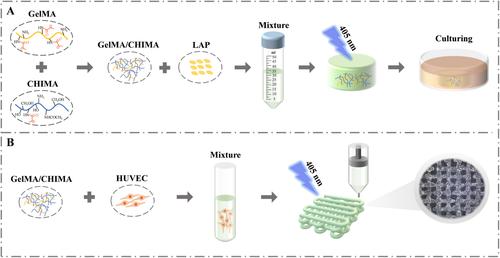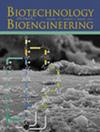3D Printed GelMA/CHIMA Cross-Linked Network Hydrogel for Angiogenesis
Abstract
Vascularization is a key issue facing the construction of functional three-dimensional (3D) tissues, which is critical for the long-term survival and stability of tissue construct transplantation. In this study, a photocurable hydrogel material carboxymethyl chitosan (CHIMA) was successfully prepared and integrated with methacryloyl gelatin (GelMA) to construct the bioink GelMA/CHIMA, which was subsequently used 3D printing technology to prepared a bioactive scaffold with angiogenesis-inducing functionality. The results showed that the cross-linked GelMA/CHIMA bioink had a porous structure that supported cell growth and metabolism. The incorporation of CHIMA could significantly improve the hydrophilicity, swelling rate, pressure resistance and mechanical strength of the bioink. GelMA/CHIMA bioink supported the survival and continued proliferation of human umbilical vein endothelial cells (HUVECs) in the scaffold. In particular, the bioink composed of 8 wt% GelMA and 2 wt% CHIMA could stimulate the expression of angiogenesis genes. 3D printed bioactive scaffolds supported the survival of HUVECs and had abundant protein deposition including CD31 and VEGF. Therefore, this study constructed a bioactive scaffold with angiogenesis induction function, which provides a feasible strategy for the construction of vascularized complex tissues.


 求助内容:
求助内容: 应助结果提醒方式:
应助结果提醒方式:


